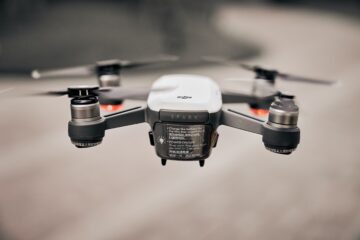In today’s interconnected world, the Internet of Things (IoT) has revolutionized the way we interact with technology. From smart homes to industrial automation, IoT is at the heart of this transformation. But have you ever wondered how these myriad devices communicate with each other? This is where IoT protocols and standards come into play, acting as the unsung heroes that enable seamless interoperability. In this article, we’ll dive deep into the world of IoT protocols and standards, exploring their significance, types, and impact on the IoT landscape.
Table of Contents
- Introduction
- Understanding IoT Protocols and Standards
- Defining IoT Protocols
- The Role of Standards in IoT
- Key Characteristics of Effective IoT Protocols
- Interoperability
- Scalability
- Security
- Major IoT Protocols and Their Applications
- MQTT (Message Queuing Telemetry Transport)
- CoAP (Constrained Application Protocol)
- HTTP (Hypertext Transfer Protocol)
- Zigbee
- Bluetooth Low Energy (BLE)
- IoT Standards: Paving the Path for Unified Connectivity
- IEEE Standards
- ISO/IEC Standards
- OCF (Open Connectivity Foundation)
- Thread
- The Evolution of IoT Protocols and Standards
- From Fragmentation to Consolidation
- Ensuring Future-Proofing
- Overcoming Challenges in IoT Communication
- Bandwidth and Power Constraints
- Data Security and Privacy
- Network Reliability
- The Role of AI and Machine Learning in Enhancing IoT Communication
- Predictive Maintenance
- Real-Time Analytics
- Future Trends and Innovations in IoT Connectivity
- 5G Integration
- Edge Computing
- Blockchain Technology
- Conclusion
Introduction
The IoT has brought about a paradigm shift in the way devices interact and collaborate, leading to a smarter and more efficient world. At the core of this revolution lies the concept of IoT protocols and standards, which serve as the invisible threads connecting a vast web of devices and systems.
Understanding IoT Protocols and Standards
Defining IoT Protocols
IoT protocols are a set of rules and conventions that govern how devices communicate and exchange information within an IoT ecosystem. Think of them as the language that devices use to understand each other’s signals and commands. These protocols ensure that devices from different manufacturers can seamlessly interact, regardless of their underlying technologies.
The Role of Standards in IoT
IoT standards take the concept of protocols further by providing a universal framework for device communication and data exchange. Standards facilitate compatibility, reliability, and scalability, making them essential for the growth of the IoT. They lay the foundation for interoperability, allowing devices to work harmoniously in various applications, from smart homes to industrial automation.
Key Characteristics of Effective IoT Protocols
Interoperability
Interoperability is the backbone of successful IoT implementation. Effective protocols enable devices to communicate flawlessly, irrespective of their hardware, software, or communication medium. This seamless interaction enhances user experience and encourages widespread adoption.
Scalability
IoT ecosystems can range from a handful of devices to millions, and protocols must accommodate this scalability. A robust protocol can manage an ever-expanding network without compromising performance or security.
Security
The paramount concern in the IoT landscape is security. Protocols must ensure end-to-end encryption, authentication, and data integrity to protect sensitive information from potential threats.
Major IoT Protocols and Their Applications
MQTT (Message Queuing Telemetry Transport)
MQTT is a lightweight protocol ideal for low-bandwidth, high-latency, or unreliable networks. It’s commonly used in remote monitoring applications, such as environmental sensing and asset tracking.
CoAP (Constrained Application Protocol)
CoAP is designed for resource-constrained devices and is well-suited for applications like smart cities, healthcare monitoring, and home automation.
HTTP (Hypertext Transfer Protocol)
While not exclusive to IoT, HTTP is used for cloud-based IoT applications, allowing devices to communicate with remote servers and access online services.
Zigbee
Zigbee is popular for its low-power consumption and is commonly used in home automation, industrial control, and lighting systems.
Bluetooth Low Energy (BLE)
BLE is prevalent in wearable devices, healthcare applications, and proximity-based services.
IoT Standards: Paving the Path for Unified Connectivity
IEEE Standards
The Institute of Electrical and Electronics Engineers (IEEE) plays a pivotal role in shaping IoT standards. IEEE 802.15.4 standardizes low-rate wireless personal area networks (LR-WPANs), forming the basis for Zigbee and other protocols.
ISO/IEC Standards
The International Organization for Standardization (ISO) and the International Electrotechnical Commission (IEC) collaborate to establish global IoT standards, ensuring compatibility and interoperability across industries.
OCF (Open Connectivity Foundation)
OCF focuses on creating a common standard for secure and interoperable IoT devices, enabling seamless communication across diverse ecosystems.
Thread
Thread is designed to provide reliable, secure, and scalable networking for IoT devices, particularly in home and building automation.
The Evolution of IoT Protocols and Standards
From Fragmentation to Consolidation
In the early days of IoT, a lack of standardized protocols led to fragmentation and compatibility issues. However, the industry is gradually moving towards consolidation, with major players embracing common standards for improved connectivity.
Ensuring Future-Proofing
As IoT continues to evolve, protocols and standards must adapt to accommodate new technologies and challenges. Future-proofing ensures that IoT solutions remain relevant and effective in the face of rapid advancements.
Overcoming Challenges in IoT Communication
Bandwidth and Power Constraints
Many IoT devices operate on limited bandwidth and power resources, necessitating protocols that are efficient and optimized for low data consumption.
Data Security and Privacy
The proliferation of interconnected devices increases the potential points of vulnerability. Robust protocols and encryption mechanisms are vital to safeguard sensitive data and user privacy.
Network Reliability
IoT devices often operate in dynamic and unpredictable environments. Reliable protocols ensure uninterrupted communication, even in challenging conditions.
The Role of AI and Machine Learning in Enhancing IoT Communication
Predictive Maintenance
AI-powered algorithms analyze data from IoT devices to predict when maintenance is needed, reducing downtime and improving operational efficiency.
Real-Time Analytics
By processing data at the edge, IoT devices equipped with AI capabilities can provide real-time insights, enabling informed decision-making.
Future Trends and Innovations in IoT Connectivity
5G Integration
The advent of 5G technology promises faster data transfer, lower latency, and enhanced connectivity, further accelerating IoT adoption.
Edge Computing
Edge computing decentralizes data processing, enabling quicker response times and reducing the load on central servers.
Blockchain Technology
Blockchain enhances IoT security by providing tamper-proof data records and enabling secure peer-to-peer transactions.
Conclusion
As the IoT landscape continues to expand, protocols and standards remain the bedrock of its success. The seamless communication between devices, facilitated by these protocols, is what transforms disparate technologies into a harmonious symphony of innovation. With the integration of AI, the rise of 5G, and the promise of blockchain, the future of IoT connectivity is brighter than ever.
FAQs (Frequently Asked Questions)
- What is the role of IoT protocols in device communication? IoT protocols define the rules for how devices communicate and share data within an IoT network, ensuring interoperability and seamless interaction.
- Why are standards important in the IoT ecosystem? Standards provide a universal framework that enables different devices to work together, ensuring compatibility, reliability, and scalability.
- How do IoT protocols address security concerns? Effective IoT protocols incorporate encryption, authentication, and data integrity measures to protect sensitive information from unauthorized access.
- What is the significance of edge computing in IoT? Edge computing enables data processing and analysis to occur closer to the data source, reducing latency and improving real-time decision-making.
- How does AI enhance IoT communication? AI enhances IoT communication by enabling predictive maintenance, real-time analytics, and intelligent data processing, leading to more efficient operations.


0 Comments